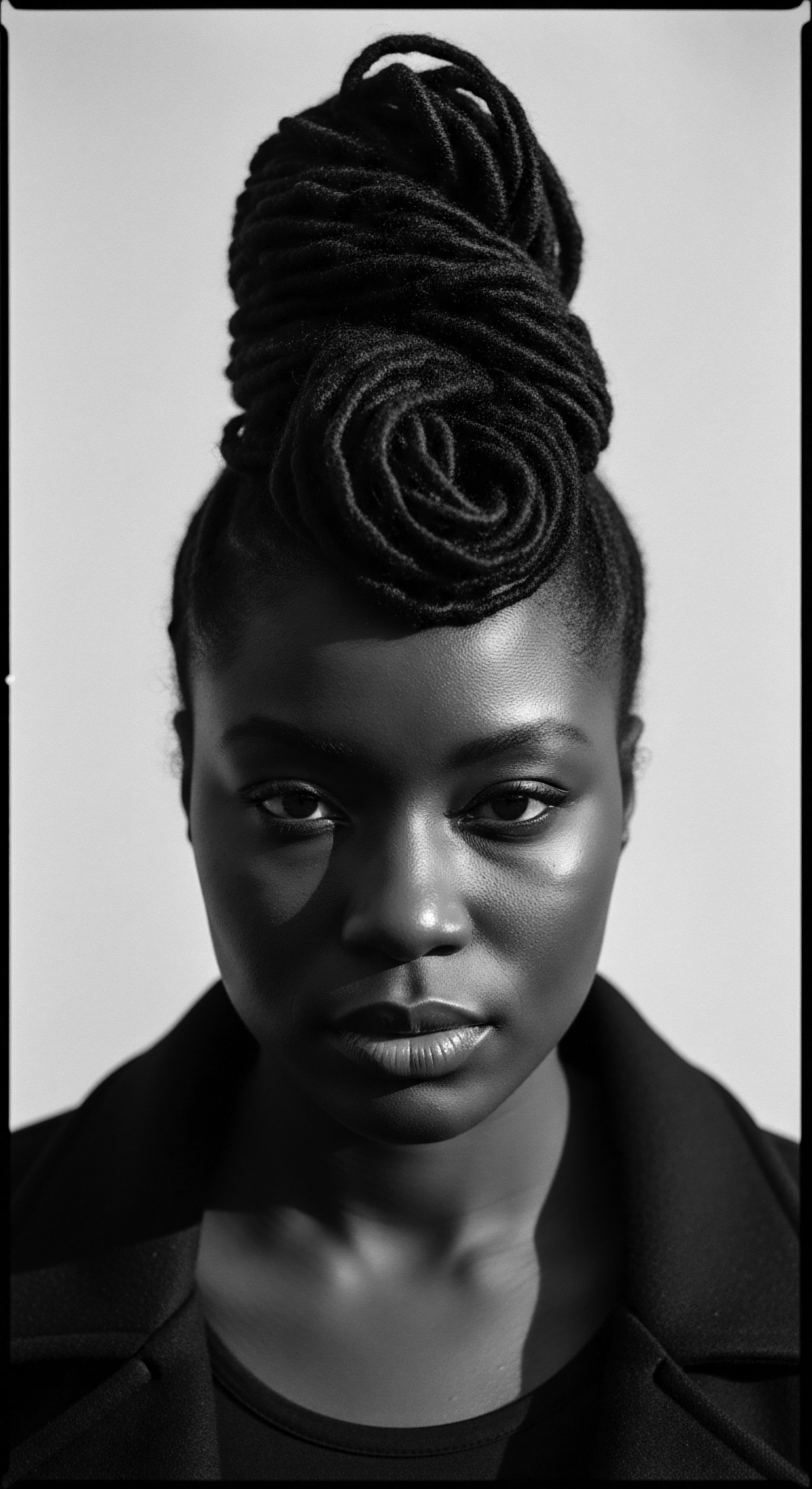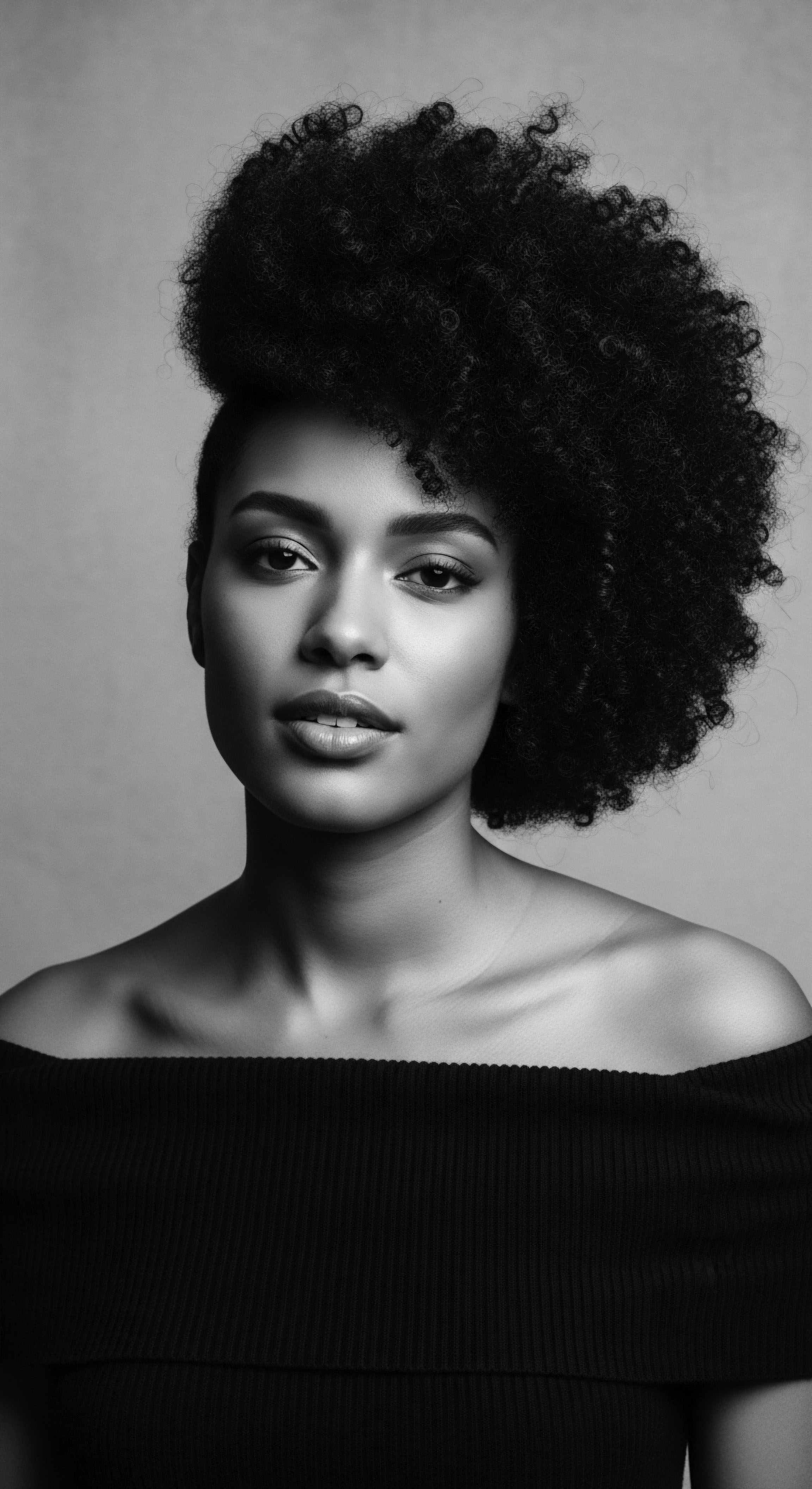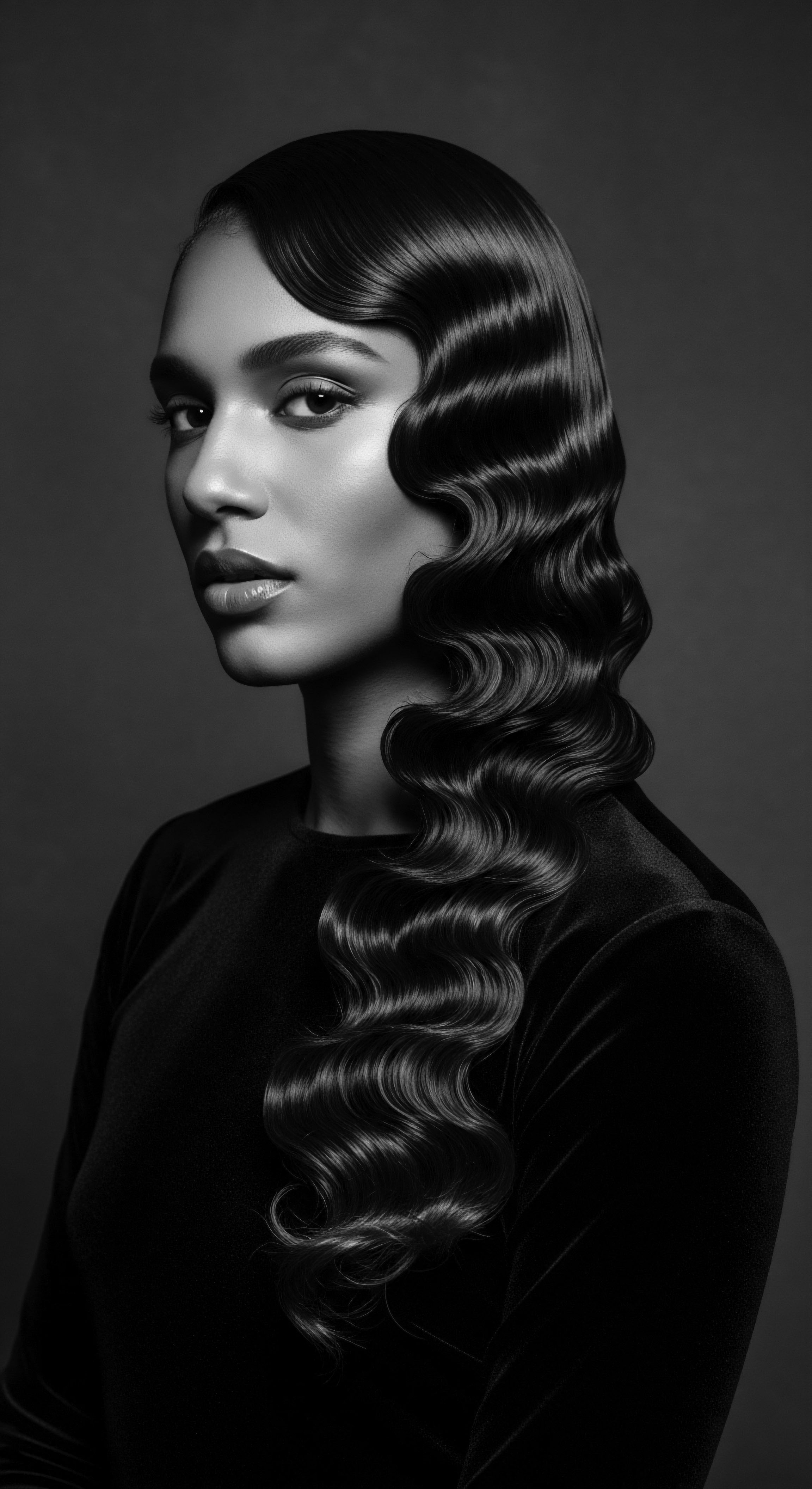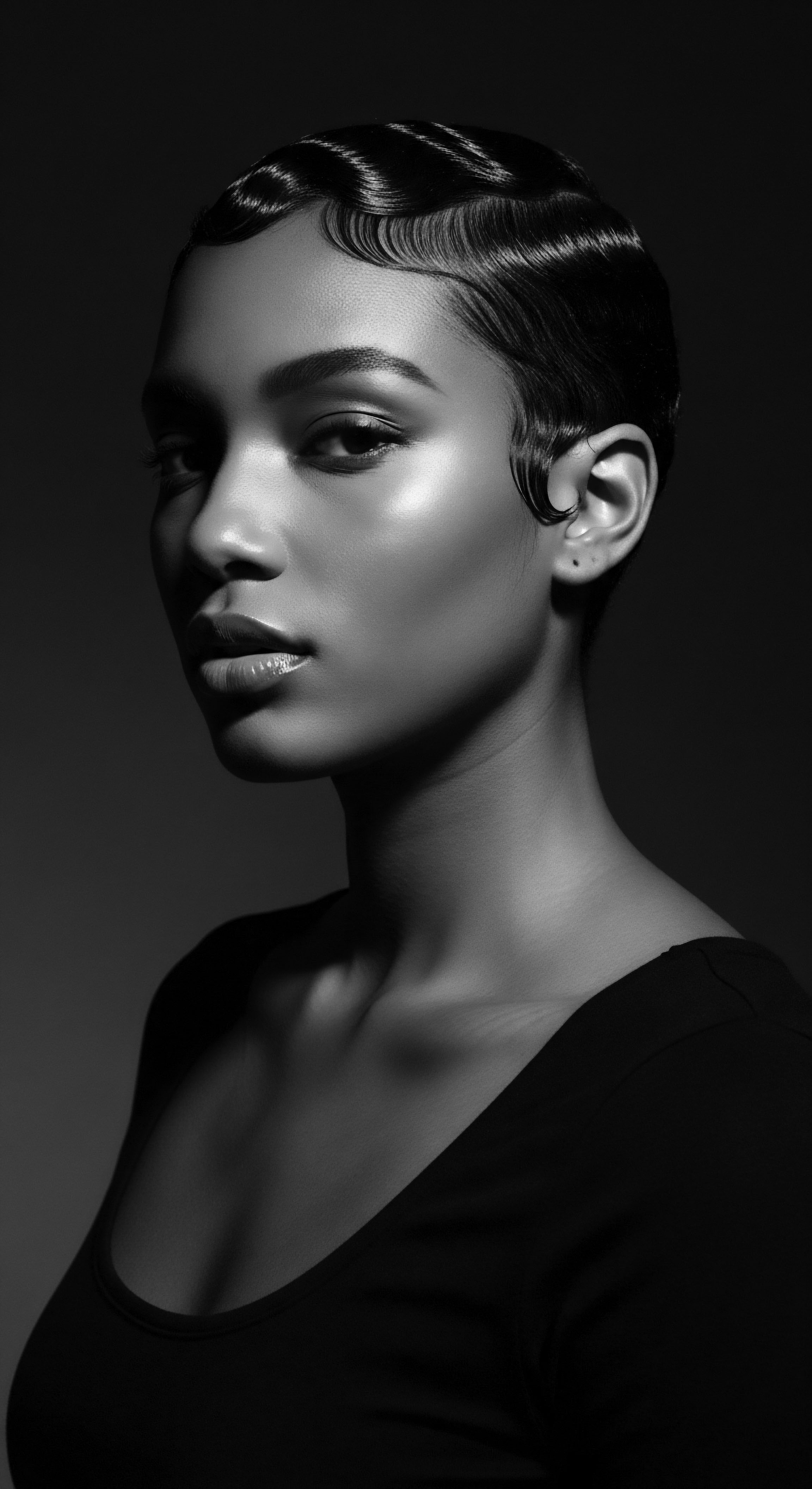
Roots
When we cast our minds back through the mists of time, seeking the genesis of textured hair care, we uncover something far grander than mere beautification. It is a profound inquiry, truly, a descent into the very ancestral memory held within each curl and coil. For those whose lineage traces through the richly diverse landscapes of Africa and its diaspora, hair has always been more than keratin and pigment. It stands as a profound testament to connection—to spirit, to community, to the earth, and to the ancestors who walked before us.
Understanding the spiritual beliefs that guided ancient hair care for textured hair means listening to the silent language of rituals, the stories whispered through generations, and the sacred regard for every strand as a living conduit of power and identity. It is here, in this sacred space, that the soul of a strand truly begins to unfurl its deepest wisdom.

Hair Anatomy as Ancestral Map
The very architecture of textured hair, with its unique helical twists and varying porosities, was understood not as a biological quirk, but often as a celestial imprint. Ancient communities, without the benefit of microscopes or chemical analyses, observed its resilience, its ability to hold intricate styles, and its natural crown-like ascent from the scalp. They perceived these qualities as direct reflections of cosmic forces and divine favor.
The tighter the coil, for instance, might be seen as a closer connection to the divine, a more concentrated energy swirling within. This intrinsic understanding meant that any interaction with hair was imbued with intentionality, recognizing its inherent power.
Ancient care for textured hair was a sacred dialogue, not just an act of grooming.
Consider how different ancient cultures named and categorized hair. While modern systems might rely on numerical typologies like ‘4C’ or ‘3B’, ancestral lexicons often drew from nature, spiritual symbolism, and social standing. In many West African societies, the naming of a hairstyle or a particular hair characteristic was laden with meaning, referencing proverbs, deities, or significant life events. For example, a style worn by a priestess might signify her direct communication with the spirits, while a specific braiding pattern could publicly announce a woman’s marital status or clan affiliation.
This was not a superficial categorization; it affirmed hair’s role as a living scroll, bearing witness to individual and communal stories. The knowledge of these specific hair characteristics, passed down orally, often served as the foundation for selecting appropriate herbs, oils, and styling methods, ensuring that each action reinforced the spiritual connection.

The Spirit in the Strand
For many ancient African societies, the head, where hair grows, was considered the seat of the soul, the locus of communication with the divine, and the point of entry for spiritual energy. This belief elevated hair beyond mere physical adornment; it was seen as a spiritual antenna, capable of receiving and transmitting messages from ancestors, deities, and the cosmos. Protecting and tending to this spiritual antenna became a paramount duty, a ritualized act of reverence. Any damage to the hair was believed to potentially disrupt this vital connection, making its care a matter of profound spiritual consequence.
The Yoruba people, for instance, hold a deep reverence for the head, known as Ori, which is considered the bearer of destiny and personal identity. Hair care practices were thus intertwined with honoring the Ori. The careful washing, anointing, and styling of hair were not just hygienic practices; they were acts of devotion, preparing the Ori to receive blessings and good fortune.
This perspective is quite different from a purely aesthetic approach. It implies that neglected hair might lead to spiritual disharmony or blockages in one’s destiny.

Ritual
The daily, weekly, or seasonal tending of textured hair in ancient civilizations was steeped in ritual, each movement and ingredient chosen with intention, echoing a deeper spiritual understanding. These practices were not arbitrary; they were deliberate acts that reinforced community bonds, marked rites of passage, and invoked blessings from the spiritual realm. The artistry of styling, the meticulous selection of tools, and the transformative power of adornment were all interwoven with a profound spiritual narrative, shaping heritage.

Adornment and Spiritual Protection
From West Africa to the Nile Valley, hair was a canvas for spiritual expression and protection. Headwraps, intricate braids, and cowrie shell adornments often served as talismans or symbols of status and spiritual alignment. A particular cowrie shell placement, for example, might be used to ward off evil spirits, while specific geometric patterns in braids could represent cosmic order or the lineage of a powerful family. The act of adorning hair was a conscious invocation of protection and a public declaration of one’s spiritual standing within the community.
Consider the practices of the Himba people of Namibia. Their women apply a paste called Otjize—a mixture of butterfat and ochre, often scented with aromatic resin—to their hair and skin. This iconic red tint symbolizes the earth’s rich red color and lifeblood, serving as a connection to their ancestral lands and the cycles of life.
The application of Otjize is not just a cosmetic routine; it is a daily ritual deeply tied to their spiritual identity, signifying beauty, purity, and readiness for motherhood. This tradition, passed through generations, demonstrates a clear link between a people’s spiritual worldview, their environment, and their hair care practices (Crabtree, 2011).

Did Hair Styling Connect to the Divine?
Yes, absolutely. The very process of styling hair was often a sacred act, a form of meditation or prayer. Hairstylists, particularly those with exceptional skill, were sometimes revered as spiritual practitioners or conduits. Their hands, moving with rhythm and precision, were seen as extensions of divine will, shaping not just physical strands but also influencing spiritual well-being.
- Braiding as Prayer ❉ In some traditions, each section of hair braided was accompanied by a silent prayer or intention for the wearer, imbuing the style with positive energy or protective qualities.
- Communal Grooming ❉ Shared hair grooming sessions became intimate spaces for storytelling, the sharing of wisdom, and the strengthening of communal bonds, fostering a sense of collective spiritual identity.
- Specific Style Meanings ❉ Certain styles were reserved for specific rituals, ceremonies, or phases of life, such as coming-of-age rites, marriages, or mourning periods. These styles carried profound symbolic weight, indicating the wearer’s spiritual status or transition.
| Culture Ancient Egypt (Kemet) |
| Spiritual Belief Tied to Hair Hair as a symbol of cleanliness, health, and connection to deities like Isis. Protection against evil spirits. |
| Associated Hair Practice Elaborate wigs, head adornments, regular oiling with frankincense/myrrh, careful cleansing. |
| Culture Yoruba (West Africa) |
| Spiritual Belief Tied to Hair Head (ori) as seat of destiny and personal deity (Orisa). Hair connects to ancestors and divine. |
| Associated Hair Practice Complex braiding for status and prayer, sacred anointing oils, head wraps for protection. |
| Culture Himba (Southern Africa) |
| Spiritual Belief Tied to Hair Hair and body symbolizing earth, purity, and life cycles. Connection to ancestral land. |
| Associated Hair Practice Daily application of otjize paste (ochre, butterfat, aromatic resin) to hair. |
| Culture Maasai (East Africa) |
| Spiritual Belief Tied to Hair Hair length and style marking age-sets, warrior status, and rites of passage. Sacrifice as spiritual act. |
| Associated Hair Practice Shaving heads (warriors, women after childbirth), ochre-stained braids for elders. |
| Culture These practices underscore hair's role as a profound spiritual and cultural marker across diverse ancestral traditions. |

Relay
The continuity of these spiritual hair traditions, spanning millennia, reveals how deeply textured hair is woven into the fabric of African and diasporic heritage. The wisdom of ancient practices, once guided by a reverence for the unseen, continues to resonate in contemporary hair care, providing a powerful lens through which to understand identity, resilience, and connection. Examining this lineage requires a blend of historical rigor and an empathetic appreciation for how these beliefs were sustained and transformed across time and geography, reflecting a deep engagement with lived experience.

Ancestral Wisdom and Modern Wellness
The meticulous care rituals of antiquity, often involving plant-based oils, butters, and herbs, were not only effective for maintaining hair health but also served as spiritual conduits. These ingredients, sourced directly from the earth, were believed to carry the vitality of nature and the blessings of the spirits. For example, the use of shea butter (Butyrospermum parkii), a staple in West African hair care for centuries, was not merely for its moisturizing properties; the shea tree itself often held spiritual significance, a provider of sustenance and healing (Odoom, 2017).
Its application to hair, therefore, was an act of drawing upon this natural and spiritual abundance, nourishing both the physical strands and the inner spirit. This deeply embedded cultural context speaks to the inherent holism that underpins many ancestral practices.
Hair care, from ancient times, united physical nourishment with spiritual connection.
The scientific understanding of these traditional ingredients today often validates the ancestral wisdom. Many traditional oils, like coconut oil (Cocos nucifera) or castor oil (Ricinus communis), are now recognized for their specific fatty acid profiles and ability to penetrate the hair shaft or seal in moisture. What modern science explains in chemical terms, ancestral wisdom understood through observation and spiritual intuition.
This creates a compelling bridge between two distinct ways of knowing, allowing us to appreciate the ingenuity of our forebears even more deeply. The resilience of textured hair, so often targeted by colonial beauty standards, finds its historical strength in these ancient rituals, affirming a profound resistance.

How Do Ancient Beliefs Inform Contemporary Care?
The ancestral beliefs surrounding hair continue to shape contemporary approaches to textured hair care, particularly within Black and mixed-race communities. The movement towards “natural hair” is not just a trend; it is a profound reclamation of heritage, a conscious decision to honor the intrinsic beauty and spiritual significance of hair that was historically devalued. This journey often involves a deeper investigation into traditional methods and ingredients, seeking out the wisdom that has been passed down through oral histories, family practices, and community knowledge.
The choice to wear one’s hair in its natural state, or to adopt styles like braids, twists, and locs, is frequently a powerful statement of identity and a connection to ancestral roots. For many, it is a spiritual act of self-acceptance and a rejection of external pressures. The reverence for hair as a crown, a symbol of power, and a link to the spiritual realm, once a guiding principle in ancient societies, has found new expression in the modern era, manifesting as ❉
- Reclaiming Self-Worth ❉ Moving away from chemical processes that alter natural texture, instead embracing hair’s organic form as a reflection of inner and outer beauty.
- Community Building ❉ Natural hair meetups and online communities serve as modern equivalents of ancient grooming circles, fostering shared knowledge and collective affirmation.
- Mindful Practices ❉ The emphasis on gentle manipulation, deep conditioning, and protective styling mirrors the slow, intentional, and often ritualistic pace of ancient hair care, promoting holistic wellness.

Reflection
To consider the spiritual beliefs that guided ancient hair care for textured hair is to trace an unbroken thread of wisdom, spanning from primordial hearths to our present moment. This journey reveals that the tending of textured strands was never a trivial matter, but a profound engagement with the very essence of being ❉ ancestry, spirituality, community, and identity. Each coil and twist holds within it the whispers of generations past, bearing witness to a heritage of reverence and resilience. Our understanding today, informed by both ancestral practices and scientific insight, allows us to recognize that the pursuit of healthy, vibrant textured hair is not merely cosmetic.
It stands as a living testament to a legacy of deep spiritual connection, a quiet defiance of erasure, and a celebratory affirmation of self. The soul of a strand, indeed, continues its luminous dance through time, forever echoing the wisdom of its source.

References
- Crabtree, C. (2011). The Cultural and Economic Dynamics of Hair in Southern Africa. University of California Press.
- Odoom, D. (2017). Shea Butter ❉ A Comprehensive Guide to Its Uses and Benefits. Knowledge Tree Publishing.
- Thompson, C. (2001). African Americans and the Politics of Hair. Praeger.
- Mercer, K. (1994). Welcome to the Jungle ❉ New Positions in Black Cultural Studies. Routledge.
- Byrd, A. D. (2003). Hair Story ❉ Untangling the Roots of Black Hair in America. St. Martin’s Press.
- Blakely, K. (2007). The Face of the Veil ❉ The Art of Adornment in African Women’s Hair. University of Washington Press.
